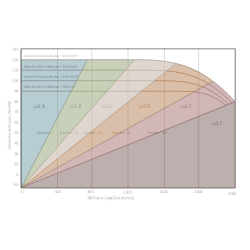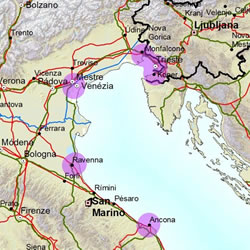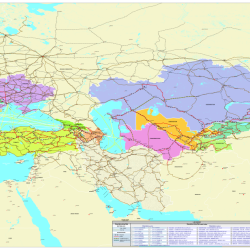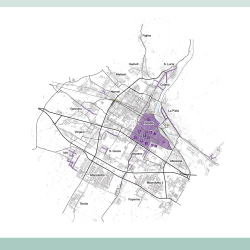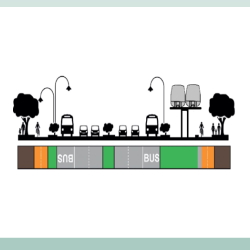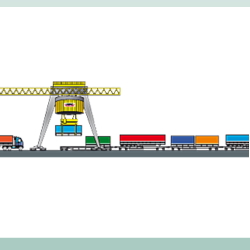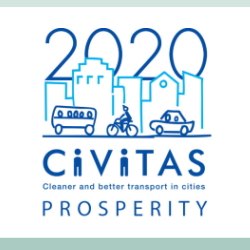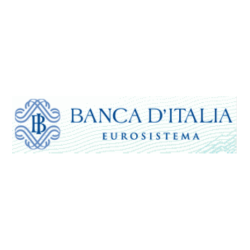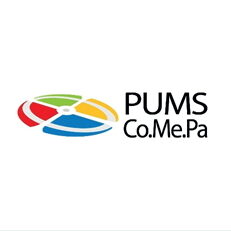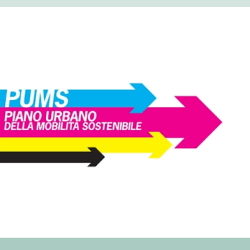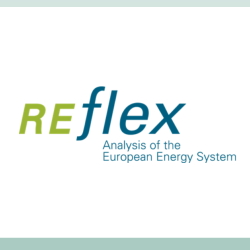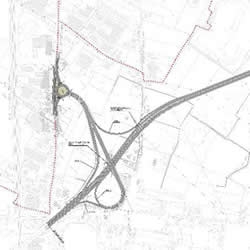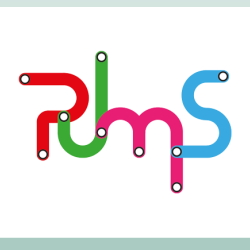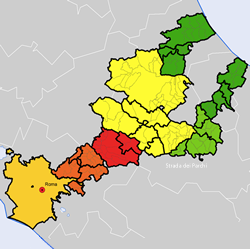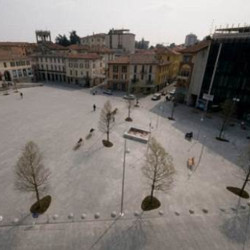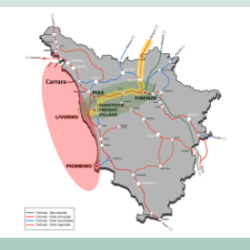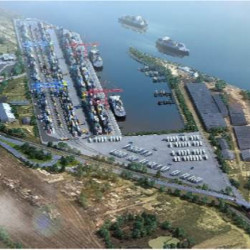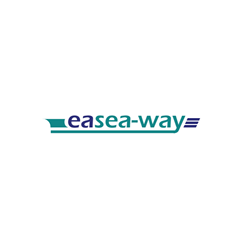- Study on the deployment of Cooperative ITS in Europe The objective of the study is to support the Commission Services in the preparation of a Communication and Roadmap on the deployment of cooperative ITS (С-ITS) in Europe, as part of the Commission’s digital single market strategy. In order to identify the most appropriate EU strategy, a set of credible scenarios for deployment have been developed. This clarify the benefits and costs of C-ITS to different actors as a result of different development pathways. TRT supported the cost-benefit analysis by modelling the impacts of deployment scenarios through the usage of European scale modelling tools ASTRA and TRUST.
- Traffic forecasts for the TiBre motorway interconnection (Italy) Traffic forecasts and analysis of the functionality of the interconnection among the A1, A15 and Tibre motorways (Italy). Key activities: estimating the expected flows at the node for the year 2025 by reviewing previously produced estimates in the preparation of the final design of the interconnection between the Cisa A15 and Brenner A22 motorways, estimation of the levels of service of the entry and exit ramps on the A1 motorway and the entry ramps on the A15 and Tibre motorways, according to the 2000 Highway Capacity Manual methodology, assessment of the functionality of entry ramps of the A1, A15 and Tibre motorways by means of a AIMSUN microsimulation model.
- Adriatic Gateway – Development of the Northern Adriatic port cluster The main objective of the project was to develop the Adriatic Gateway integrating the Northern Adriatic Port Cluster in order to meet the upcoming requirements for the fundamental role that the Adriatic Corridor should play in the European transportation network. The project was structured in three phases: traffic and market studies providing an overall picture of present and future transport demand and supply in Europe, definition of a model of excellence for a multi-port gateway. The Adriatic Gateway Model, intended as a multi-port, designing whether and how the pre-identified “excellent” models can be applied to the specific case of the AG and more generally the Mediterranean Area.
- TRACECA IDEA I – Transport dialogue and interoperability between the EU and its neighbouring countries and central Asian countries Funded by the Directorate General for Cooperation and Development of the European Commission within the framework of the TRACECA Programme (TRAnsport Corridor Europe Caucasus Asia), the IDEA project aimed at improving the functioning of the transport corridor connecting Europe with Central Asia. The beneficiary countries of the TRACECA programme are Georgia, Armenia, Azerbaijan, Ukraine, Moldova, Kazakhstan, Tajikistan, Uzbekistan, Kyrgyzstan, Turkmenistan, with Romania, Bulgaria and Turkey as observatory countries. The project activities included the construction of the regional transport model, the deployment of a capacity building program for the national officers on themes like project planning and assessment, the definition of indicators to measure the corridor attractiveness and the organization of two international conference where the countries representatives presented their transport project along the corridors to banks and international financial institutions. The consortium led by TRT was composed of PTV, Dornier Consulting and Alfen.
- Transport analisys of the land-side strategies of the Marco Polo Airport (Venice) TRT supported SAVE to define the land-side infrastructure Marco Polo Airport in Venice according to the interventions of both short and medium-long term linked to the new Masterplan Airport. The activity had been divided into two phases, with different methodological approaches: the First Phase aimed at supporting SAVE spa in defining the new Public Transport routes to the terminal and the new parking area of the commercial buses. the Second phase aimed at developing a dynamic microsimulation transport model in order to support of the medium and long term scenarios of the airport Masterplan (2021-2027) defining the performances and the level of accessibility of the land-side transport schemes.
- Prato – Urban Traffic Plan (PGTU) After drawing up the SUMP (a strategic mobility plan with a ten-year validity) approved in 2016, TRT was responsible for preparing the Urban Traffic Plan (PGTU) of the city of Prato, 190,000 inhabitants near Florence, Italy. The PGTU is the “action plan” of the SUMP, thus detailing SUMP short-term actions both in the Reference Scenario and in the Planning Scenario. The activities concerned: the design and supervision of a campaign to detect urban traffic flows at 12 sections and 15 urban intersections; the adaptation to a more detailed scale of the traffic simulation model (AIMSUN, already available at Municipal level) and its calibration; the design of the Reference Scenario, which included actions already approved and financed, and of the Planning Scenario with particular attention to the measures that can be implemented in the short term (road network, public transport, cycling, demand-management policies, parking, urban logistics, ITS), consistent with what has been proposed by the SUMP; the assessment of the planning scenario as well as the preparation of the related indicators and graphic outputs. The PGTU has been approved by the Municipal Council on 27/12/2018 with the act n. 477.
- Mobility data in European countries As part of a study aimed at modelling the charging infrastructure for electric vehicles in Europe, Nissan Technical Centre Europe charged TRT to carry out two studies. The first study was aimed at elaborating a set of statistical indicators to describe commuting car trips with destination in a selected number of European cities. The indicators was developed for all cities with a population of more than 250,000 inhabitants in seven different countries: France, Germany, Italy, Netherlands, Norway, Spain and UK. The objective of the second study was to identify the location of fast recharge facilities available in the same seven countries mentioned above and also to provide typical traffic daily profiles on the road network of these countries.
- Shanghai Jinshan Marina Urban Planning (China) Following the winning of the international context by GALA engineering, TRT was selected to carry out the design of road transport network and the Public transport system in the marina of Jinshan New Town, located south of Shanghai. The project integrates two innovative solutions: multimodal transport system with bus, rail and innovative systems dedicated transport system for the cruise port planned to accommodate thousands of tourists daily Area: 2.6 million of square metres Definition of parking areas according to a wide range of functionalities serving more than 150 000 users. Definition of parking pubs to accommodate seasonal touristic flows leaving form the new cruise port Definition of cycling and pedestrian paths to connect the new seaside and the green areas
- Gathering additional data on EU combined transport This study, committed by DG MOVE to TRT and MDS, presents a detailed analysis of combined transport (CT) operations in the European Union (EU) and provides quantitative and qualitative evidence of the current status of the European CT sector. By updating the information with respect to the 2015 fact-finding study (entitled “Analysis of the EU Combined Transport”) the study was designed to help DG MOVE to identify measures that would be effective in supporting the CT sector. The analysis was supported by a survey, which allowed the consultants to collect primary data on CT operations for the reference year of 2015 from a full cross-section of EU Member States for different modal combinations and industry sectors. For each combination of modes, detailed data on the volumes of transhipments and the main costs involved in CT operations are analysed and discussed both at a European and a Member State (MS) level and further analysed through a series of statistics and indicators. The study also examines the current use of regulatory support measures introduced by Directive 92/106/EEC; these measures address issues such as own-account transport and road haulage cabotage. By offering a number of indicators on CT operations and insights into the related legislative framework, the study represented a key information source for the completion of the European Commission’s Impact Assessment of the amendment to Directive 92/106/EEC.
- Transport Study for the Danube Macro-Region The study was conceived for the EU Strategy, specifically for the Priority Area 1b of Mobility and Multimodality, addressing road, rail and air transport modes. The EU Strategy tackled mobility challenges and aimed at identifying opportunities to support the development of transport networks within the so-called Danube Macro-Region, whose geographical scope embraces fourteen European countries. The overall objective of the study was to create an integrated multimodal transport study. The tasks of the study were organised to cover the following activities: perform an extensive review of studies, at national and supranational level, and databases to collect information on the transport sectors, socio-economic characteristics, future demand projections as well as proposed transport projects. elaborate a baseline scenario of the Danube Macro-Region analysing (i) the transport demand and forecasts, (ii) physical and non-physical bottlenecks and (iii) environmental and safety issues. identify relevant linkages to ports emerged from the Inland Waterway 1a study that could be tied with the three modes considered. split the Danube Macro-Region in a number of Functional Regions to go beyond a country centric approach. evaluate current priorities and developments in linkage to the TEN-T core network corridors. carry out a stakeholders consultation for projects identification. The study identified 23 relevant projects representative of the broadest types of transport problems identified in the Danube Macro-Region, or that could be faced in the future. The projects were all considered relevant for the development of the transport sector and the final list stemmed from a long list of interventions proposed by the CNCs studies, the SEETO Multi Annual Plans, the updated REBIS study, as well as the national transport plans and strategies. Also, other projects proposed by interested stakeholders were taken into consideration. The proposed projects were selected taking into account relevant criteria: estimated investment costs, timing of implementation, ability to address bottlenecks or safety issues and geographical and modal distribution. The analysis rendered a comprehensive description of the proposed projects despite the fact that some information was missing. The approach followed and the screening and data collected for all the projects from the various studies, plans and strategies gathered, could be a useful starting point for further and specific analyses and for the identification of a lively pipeline of relevant projects in the region. The framework of the identified Functional Regions could give additional guidance in this sense.
- Support study for the impact assessment for the revision of EETS legislation The implementation of an interoperable electronic tolling systems (European Electronic Toll Service – EETS) was one of the objectives of the European Commission. This study supported the European Commission to assess the impact of the revision of Directive 2004/52/EC establishing the rules to introduce the electronic tolling systems for trucks and passengers cars, in order to automatize and simplify the revenues collection process. This study supported the impact assessment of the European Commission in: analysing and reporting the outcomes of the consultation exercises conducted as part of the ex-post evaluation and impact assessment. providing missing data and information to complete the problem definition defined by the Commission and validating the latter or proposing changes. assessing the impacts of a lack of interoperability comparing three policy options against a baseline scenario. The impacts were estimated for road users (i.e., trucks, coaches and private cars) and toll chargers, with regard to direct and indirect costs. calculating the impacts related to development scenarios with respect to cars, trucks and coaches travelling on international journeys. Overall, taking into account the effectiveness, the efficiency and the comparison of other impact categories, the support study identified the legislative approach (i.e., the option of introducing market correction entirely via legislation) as the one more likely to ensure a level playing field across a wider region and performing better than the self-regulated option. Based on the impact assessment carried out, the solution of both regulatory and market failures with legislative means emerged as the preferred option for future implementation. TRT was responsible for the following activities: development of the model for quantifying the cost and time-losses for road users due to lack of interoperability of electronic tolls in the EU; development of the baseline scenarios within the Excel-based model; development of the policy scenarios in the model and assessment of the economic impacts. For more information Final report – Support study for the Impact Assessment for the Revision of EETS Legislation (Directive 2004/52/EC & Decision 2009/750/EC)
- CIVITAS Prosperity – Prosperity through innovation and promotion of Sustainable Urban Mobility Plans The project, led by FGM-AMOR in a consortium of 26 partners, is funded by the EC H2020 research program and aims at innovating and promoting SUMPs in 12 European countries: Slovenia, Lithuania, Croatia, Cyprus, Czech Republic, Romania, Hungary, Bulgaria, Poland, Romania, Germany, Portugal. The PROSPERITY projects is developed along the following key activities: National Programmes – Strong involvement of national ministries or agencies to develop or improve national level programmes to encourage their cities to develop SUMPs; Living Labs – A support for partner cities to be living labs demonstrating to other cities how SUMP can be developed and implemented; Tools and Guidelines – Developments and improvements of tools and guidelines to provide advice and support to cities in their national context; Capacity Building – Innovative capacity building and training tailored to the needs and context of each country. TRT contribution to the project is mainly focused on training and capacity building activities related to tools needed to develop SUMPs, including the Urban Transport Roadmaps one. For more information: Innovation brief on city logistics solutions (Stefano Borgato, Giuseppe Galli, Simone Bosetti) Interview to Simone Bosetti, SUMP Ambassador: the transport planner and chair of the EU SUMP platform coordinating group, talks about recent experiences of the SUMP planning practice in Italian cities
- Technical assistance to the CAPTAIN project – Adriatic IPA CBC 2007-2013 TRT has been selected by RAM (Rete Autostrade Mediterranee) an in house company of the Italian ‘Ministero delle Infrastrutture e Trasporti’ to provide technical assistance to the CAPTAIN project of the Adriatic IPA 2007-2013 programme. The project developed in 2016 involved 10 partners (institutions, research centers and port authorities). CAPTAIN project aims to collect and share the results Adriatic MoS, EA-Sea-Way, Adrimob projects, already financed by the IPA Adriatic Programme 2007-2013, with particular attention to the resolution of bottlenecks and the missing links for good transport in the partner countries (Italy, Croatia, Montenegro, Greece, Albania, Bosnia and Herzegovina, Slovenia). The technical assistance activities concerned: the follow up of the feasibility study of the Adriatic MoS project; the coordination of EA Sea-Way and Adrimob feasibility studies; the dissemination of good practices and technical coordination activities during meetings and workshops.
- Statistical sample survey on the international freight transport 2016-2019 TRT has been commissioned by the Banca d’Italia (Italian Central Bank) to carry out a four-year survey on the international freight transport, in order to: identify the unit costs of different transport modes for imports and exports; identify the components of ancillary costs; show in a matrix the abroad goods exchange; define the market share held by Italian actors in the maritime, air and rail transport sectors; estimate the turnover made by Italian ship-owners abroad. This project follows similar surveys managed by TRT since 1998, whose results are used by Banca d’Italia to estimate the Balance of Payments for the corresponding years.
- Sustainable Urban Mobility Plan – Metropolitan area of Padua’s (Comepa) Following a public tender, TRT, in cooperation with Technital, Atraki and Avanzi, has been commissioned by the Municipality of Padua for the drafting of the new SUMP for Metropolitan area of Padua (CoMePa). The Plan has been approved by the City Council in January 2020. The first phase of activities ended in October 2016 with the completion of the first set of activities: description of the current status of urban mobility, field surveys, organization of participatory events to gather stakeholders positions and construction of the multimodal transport simulation model. The resignation of the City Council in November 2016, led to the suspension of activities. In September 2017, the dialogue within the CoMePa resumed with the aim of proceeding with the drafting of a SUMP, being Padua one of the 18 Municipalities that – on a voluntary basis – started the process of transport planning at metropolitan scale. In 2018 the SUMP was completed with the Plan Proposal presented to the technical and political bodies of the Municipalities of the Padua metropolitan area. The Plan Proposal was discussed in different meetings with technical and political bodies of CoMePa . The third phase was completed with the quantitative assessments of the Plan interventions and the drafting of the final document of the PUMS to be adopted and approved by the Municipalities . The participatory process adopted for the SUMP development led to the inclusion of different measures to encourage the transition towards low carbon mobility through: modal shift actions; the introduction of a vehicle access control area (Low Emission Zone -LEZ) for Padua; the promotion of penetration of electric traction and low environmental impact vehicles in the central area. For more information Documents available on padovanet.it (only available in italian) “Sustainable Urban Mobility Plan (SUMP) of Padova and metropolitan area”. Case study published on Eltis Platform
- Drafting of the Sustainable Urban Mobility Plan of the city of Parma (Italy) Following a public tender, TRT has been selected by the City of Parma for the drafting of the new SUMP. The first step has led to the definition of the strategic guidelines of the Plan while, during 2016, the SUMP has been drafted in a pre-approval form. The SUMP process has been developed through the following activities: reconstruction of the knowledge in the area of transport and mobility; analysis of its strengths and weaknesses; identification of targets that have been selected by policy makers, stakeholders and citizens (that have contributed through the on-line survey conducted in support to the SUMP); drafting of the SUMP guidelines that have been approved by the City Council (Sep. 2015); definition of the alternative SUMP scenarios (successively shared among policy makers, stakeholders and citizen representatives); technical, economic, environmental and social evaluation of the SUMP scenarios; identification of the best SUMP scenario. The Plan has been officially approved by the City Council on 21st March 2017 and has undergone a SEA (Strategic environmental assessment). For more information Documents available on comune.parma.it (only available in italian) “Parma’s SUMP: the first in Italy combined with a Strategic Environmental Assessment”. Case study published on Eltis Platform TRT was commissioned in 2019 to coordinate the implementation and monitoring of Parma’s SUMP and was also responsible of the drafting of the General Urban Traffic Plan of the city of Parma.
- REFLEX, a project funded by the Horizon 2020 EU research program, focused on the analysis of the European Energy System under the Aspects of Flexibility and Technological Progress The core objective of the REFLEX project is to analyse and evaluate the development towards a low-carbon energy system with a focus on flexibility technologies in the EU to support a better system integration of Renewable Energy Sources. The project, lead by University of Dresden (Germany), identifies and assesses the most relevant low-carbon technologies and flexibility options in the mobility, heat and electricity sectors for a sustainable and cost-effective transformation of the European energy system. The analysis is based on a modelling system that considers the full extent to which current and future energy technologies and policies interfere and how they affect the environment and society while considering technological learning of low-carbon and flexibility technologies. In the REFLEX project TRT provides expertise in the analysis of the impact of flexibility and technology options on mobility and transport. Both diffusion of alternative technologies in the vehicle fleet and energy and transport policy measures have been considered to analyse the decarbonisation pathway in the transport sector. To this end, the ASTRA system dynamic strategic model simulates the transport system in linkage with the economy, the environment and the energy systems. It is therefore capable to represent long term impacts of transport policies not only on mobility but also on wider aspects such as economic growth or greenhouse gas emissions. In comparison to all other energy sectors, the transport sector increased its GHG emissions since 1990. These emissions need to be reduced by 2050 by at least 60% relative to 1990. Considering the continuous growth of passenger and freight transport demand, strong and timely responses are required at the policy level. Within the REFLEX project, a reference scenario (Mod-RES) and two ambitious policy scenarios (High-RES) are simulated with the ASTRA model (under consideration of global learning for batteries through coupling with the TE3 model) and flexibility potential provided for the electricity sector. Results indicate that a bundle of complementary measures (boosting transport system energy efficiency, supporting the electrification of road transport and promoting alternative fuels )is required to support and accelerate the transition. For more information Brochure Policy brief on Transport trends in the context of future energy scenarios Paper on Investigating the impact of e-bikes on modal share and greenhouse emissions with the ASTRA model. Detailed techno-economic assessment of low-carbon technologies focusing on flexibility options and applying bottom-up sectoral models and demand projection models of the heat, electricity and transport sector, download deliverable. Application of social environmental life cycle assessment (eLCA and sLCA) to analyse and compare environmental impacts, social risks and external costs due to life cycle-based environmental impacts related to the European energy systems for the three envisaged REFLEX scenarios, download deliverable. Document providing a short but concise overview of the main findings for the different sectors and a bundle of policy recommendations derived thereof. The book “The Future European Energy […]
- Alessandria – Sustainable Urban Mobility Plan and updating of the Urban Traffic Plan The Municipality of Alessandria awarded TRT to draft the Sustainable Urban Mobility Plan (SUMP) and to update the Urban Traffic Plan (UTP). The SUMP-UTP process was developed along four steps: the background analysis of the mobility-related sector and its environmental, social and economic impacts in Alessandria, including the development of extensive surveys (traffic, parking supply and demand, public transport passengers counts); the identification of the strategies for the construction of the SUMP/UTP scenarios, as a result of the background analysis as well as the objectives and the priorities raised by the local Administration; the design of different scenarios: reference solution and SUMP scenario (short period – 2 years and long period – 10 years); the evaluation of the alternative scenarios through the implementation of an AIMSUN transport model for the urban area. In addition, specific detailed documents such as the Parking Plan and the Urban Public Transport Plan have been developed. The SUMP-UTP was adopted with resolution no. 168/16110-220 of the City Administration on 9/06/2017. Following the establishment of a new municipal administration, in 2019 TRT subsequently updated the plan and supported the administrative process of the new version until the final approval. After the adoption in September 2019, the updated SUMP-UTP document in its final version was approved by the City Council on 10/06/2020 with resolution no. 31
- Traffic impact study of new settlements in the area of the Treviso airport (Italy) The study analyzes and offers possible solutions to the mobility impacts generated by the future urban developments of the Antonio Canova airport in Treviso, as well as the nearby commercial area Ex-Marazzato and the multipurpose development area called AirCenter. The proposed solutions have been tested by using a dynamic micro-simulation tool. The application of the micro-simulation techniques allows an in depth analysis of the impact of traffic flows generated by new urban developments on the road network.
- The EU Maritime Transport System: Focus on Ferries TRT has drafted an initial Briefing that provides the Members of the Committee on Transport and Tourism of the European Parliament with a clear overview of the EU Maritime Transport System, with a special focus on passenger ferries and the role they play in contributing to the multimodality of EU transport. The Initial Briefing discusses new opportunities in the future development of the ferry industry in the EU (technical innovation and tourist promotion). The specificities of the ferry industry are addressed considering history, size, growth, employment, performance of the industry, impact on environment, safety records, characteristics of the operations at different scale (urban, regional and national), possibility of integrated ticketing and competition with infrastructures (fixed links) and services (low-cost carriers).
- Study on specific driving and rest time rules for bus and coach drivers in the EU This study analysed appropriateness and impacts of a possible legislative revision to current EU rules on driving and rest times. Specifically, this study investigated the possibility to introduce a distinct rulemaking to discipline driving and rest time rules for professional bus and coach drivers. The study carried out a questionnaire-based survey covering 8 EU Member States which have been selected in a manner that allows to compare complementary country profiles. An extension of the analysis has been granted in 2015 so to shoulder IRU position for a legislative revision in 2016 of the requirements on: 12-day derogation, weekly rest and daily spread-over.
- Technical assessment of the 4th lot of the road bypass of the city of Treviso (Italy) The study concerns transport analysis performed by TRT for the Municipality of Treviso, with the aim of assessing the feasibility of Lot IV of Treviso road bypass. These transport analysis offer a transport assessment of the infrastructure usefulness, in relation to the urban mobility of the city and to the surrounding areas. Some of the potential benefits on the road network have been considered and estimated: decrease in traffic flows, reduction in travel times and potential improvements in traffic safety. In addition, the feasibility of a different layout has been assessed, i.e. the redesign the intersection of the new road with the regional route S.R.348, by envisaging a solution for its extension.
- Preparation of the Urban Mobility Plan of the city of Prato in Italy TRT, as a result of a tendering procedure, has been selected by the City of Prato to support their offices in the preparation of the SUMP. The Plan takes as reference methodology the “SUMP guidelines” prepared by the EU Commission (with the contribution, among others, of TRT). The SUMP process has been developed in four steps: background analysis of the mobility-related framework and its environmental, social and economic impact in Prato; identification of the strategies for the construction of the SUMP scenarios, as a result of the background analysis, the selected objectives and the priorities raised through public listening (surveys and thematic/territorial focus groups); design of two different scenarios: reference solution and SUMP scenario – the latter is characterised by a set of coherent transport measures aimed at achieving specific objectives; evaluation procedure, implementing a ex ante transport model (AIMSUN) and a policy evaluation procedure (MOMOS) derived from the Urban Road Map 2030 tool. The SUMP of Prato has been presented to the local community, stakeholders and decision makers in October 2016. The Plan has been approved by the City Council in June 2017. TRT was also responsible of the drafting of the Parking Master Plan and the Urban Traffic Plan of the city of Prato In 2022, TRT also drafted Prato’s e-Mobility Plan and the SUMP monitoring report in accordance with the indicators of DM 396 of 28/08/2019. For more information (Only available in italian) Official SUMP webpage hosted in the website of the Municipality. It contains all the information related to the SUMP process in Prato Webpage where project deliverables and annexes can be found Link to download the final SUMP document
- Financial and business model for a bike station to be realised next to the «Milano Lambrate» railway station The study focused on the definition of a financial and business model for the set-up of a bike station (a safe parking for bicycles, accompanied and supplemented by complementary activities), with particular reference to the case of Lambrate railway station, a strategic public transport node in the city of Milan. The financial and business model has been developed in order to maintain a modular and parametric approach, as well as to provide the transferability of results to other similar contexts.
- EasyConnecting – Feasibility analysis of two new maritime services between the port of Ravenna and IPA countries TRT conducted a study on the feasibility of two new services. Analysis of the Ro- Ro traffic at national level, in the Adriatic Sea and from the port of Ravenna. Identification of potential routes between ports of Ravenna and IPA area (Adriatic Cross-border Cooperation Programme), focusing on the Albanian ports. Investigation of the potential of new scheduled services based on the evaluation of the operating costs of new services as compared to the use of a Ro-Ro ship. Evaluation of the economic and operational feasibility of the two liner services and drafting a business plan guidelines for the two selected services
- U-TURN – Rethinking Urban Transportation through advanced tools and supply chain collaboration The U-TURN project, funded by the European Commission as part of the strategic HORIZON 2020 program, aimed to identify new models for urban food transportation based on collaborative logistics, with the objective to reduce the environmental impacts of food deliveries in urban areas, providing new innovative low-impacts transport solutions. The project was developed by a consortium with European-wide coverage and involvement of top industrial, academic, consulting and technology partners to propose and test innovative business models to achieve more efficient operations – both environmentally and economically. During the project, a “smart” transport matching tool and a collaborative web platform were developed and tested by 3PLs, online retailers and local farmers to measure the impact of collaborative logistics practices. TRT, in addition to the research and methodological activity, led the Italian pilot case, focusing on the farms located around Milan, with the objective to optimise the transport distribution flows from the farms to the city centre through collaborative logistics solutions. Local food producers around Milan have a high preference for using their personal vehicles to transport goods rather than co-operating, therefore TRT proposed and tested, through the web-based platform, new collaborative business models addressing farmers’ requirements and actual challenges faced by the km-zero food market sector. During the project, TRT involved local farms and public stakeholders, driving the development of the pilot case, to demonstrate the opportunity to cut down travel distance, number of vehicles and their environmental impact, allowing the farmers to save time for their core business activity by introducing the collaborative logistics concept in rural areas. For more information Article “Logistica Collaborativa per le cascine milanesi“ (Collaborative Logistics in Milanese farmhouses) – September 2017 Article “La logistica tra le cascine milanesi” (Logistics in Milan farmhouses) – June 2017
- Transport and cost-benefit analysis for the feasibility study of the adjustment of the A24 and A25 motorways in Italy The study included the following activities: transport analysis of A24 and A25 motorways through the use of the AIMSUN simulation model to evaluate the impacts resulting from the implementation of some route alternatives; accessibility analysis in the current conditions, in the project scenario and in relation to the construction phases with particular regard to safety conditions; cost-benefit analysis of alternative scenarios of the planned interventions for the two highways, combined with the risk analysis of some variables such as growth in traffic demand over time.
- Urban Traffic Plan of Cantù (Italy) and its update TRT has been selected by the Municipality of Cantù in order to draw up the Urban Traffic Plan for the city. Cantù, 38,000 inhabitants, is located in the hilly suburbs of Como, North of Milan. In the period 2008-2011, TRT activities have been related to: the reorganization of the road system, the safety improvement of the road network, the improvement of the modal interchange at the railway station. After drafting the Plan, TRT has assisted the Municipality throughout the approval process. Later, in 2014, the City Council has set as its ambitious goal the creation of a Limited Traffic Zone (LTZ) in the city centre. The activity of TRT focused the evaluation of the technical feasibility of the proposal made by the Municipality, as well as the definition and assessment (with the application of a microsimulation traffic model) of alternative scenarios. After the selection of the selected scenario, the Plan has been updated and then approved by the Municipality on 16/03/2017.
- Study for the creation of the integrated intermodal logistic system in Port of Taranto back area The action, co-funded under the TEN-T programme of the European Commission, completed a study for the enhancement of the existing intermodal facilities in Ferrandina as a pilot phase for the re-organisation of the back-port Logistic System of the Port of Taranto. The action included all the necessary steps from market feasibility studies to final planning and the attainment of building authorisations. The study also assessed the feasibility of financing such works through the establishment of a PPP scheme. TRT as main technical coordinator of the action, provided different types of supports: technical and administrative/financial reporting, organisation of meetings.
- Improving the Fuel Economy Policies Implementation Tool (FEPIT) The FEPIT (Fuel Economy Policies Implementation Tool) is used by the International Energy Agency (IEA) for estimating the impact of some policy measures on the average fuel economy of newly registered cars. This tool is expected to support decisions to implement policy schemes aimed at getting the Global Fuel Economy Initiative (GFEI) target of 4.2 lge/100 km in the year 2030. The model allows to analyse the impacts of several policies aimed at reducing the level of fuel duties taking in consideration the specification of the vehicle fleet of a particular country and of different scenarios. This study provides an updated version of the FEPIT model which contains new parameters coming from a more rigorous methodology. In this version a user guide has also been produced.
- Ex-post evaluation of the road transport social legislation and its enforcement In two distinct assignments, TRT has focussed on the EU legislation currently in force in the area of commercial road freight transport sector. Both entails an ex-post evaluation of the relevant EU norms governing: access to the occupation (Regulation 1071/2009), access to the international road haulage market (Regulation 1072/2009), social aspects (driving times, rest periods and working time) of the road transport sector including enforcement mechanisms across the EU Member States (Regulation 561/2006 and Directives 2002/15/EC and 2006/22/EC). In both assignment an assessment is carried out with respect to the actual performance of these legislative interventions in terms of achieving their objectives, as well as the overall impacts (both intended and unintended) on societal, economic and environmental issues and possible requirements for future action.
- Study on Urban Mobility – Assessing and improving the accessibility of urban areas This study in urban accessibility has been designed in order to advance the understanding of urban accessibility in order to improve the functioning of urban areas and make the transport system in Europe’s urban areas more efficient. The study, carried out by Ricardo and TRT, comprises various tasks. TRT has played a major role in estimating European urban road congestion costs and comparing relative efficiency of urban passenger transport modes. The welfare economic approach is used to define a measure of congestion cost in terms of deadweight loss in cities. The estimation of congestion costs per year (per capita and at urban level) is based on available congestion indexes for a sample of cities and other relevant information (population, value of time, share of car mode split, car occupancy factor). Delay congestion costs were also estimated. The relative performance of different urban transport modes was assessed in relation to capacity; energy use; CO2 emissions and user cost. The above metrics were assessed for private modes (car and motorcycle) and public transport modes (bus and rail). Also, metrics was assessed for metropolitan areas and medium cities, and for peak (or congested) traffic and off-peak (or uncongested) traffic.
- Cost-benefit analyis for the railways links of the Port of Livorno (Italy) The project concerns the improvement of multimodal transport operations at the nodes of the port of Livorno and the Interport of Guasticce (Italy), through specific interventions on rail routes (works for about 200 million Euros). TRT has taken care of the traffic forecasts by means of the European model TRUST. It has analyzed the economic aspects of the project, assessing their financial and economic feasibility (cost-benefit analysis) as well as the socio-economic impacts.
- Advisory support in preparing the Application to CEF 2014, to finance the project “Galaţi multimodal platform” The assistance provided support in preparing the application to 2014 CEF (Connecting Europe Facility) Transport Calls for Proposals, with the aim to finance the project “Galaţi multimodal platform”. The service mainly consisted in the three phases: Phase 1: kick-off meeting and start-up of activities: data collection and preparation of the socio-economic impact assessment; Phase 2: elaboration of the financing application and related annexes: identification of project budget, financial analysis (including Cost Benefit Analysis), preparation of the financing request, preparation of administrative documentation and statement, electronic submission of application file; Phase 3: assistance in the period between submission of the application file and decision of the competent authority on project approval.
- BENEFIT – Business Models for Enhancing Funding and Enabling Financing of Infrastructure In Transport BENEFIT developed an innovative approach by analysing funding schemes within an inter-related system and depending on their Business Model (described by a governance model). These were key elements in the transport infrastructure provision, operation and maintenance and the funding and financing schemes were analysed in this respect. This envisaging the transferability of findings with respect to the lessons learned, the limitations and the impact of the financial and economic crisis. The BENEFIT project took stock of over twenty years of EC’s funded, national and international research and received direct inputs from the OMEGA Centre and COST Action TU1001. BENEFIT undertook an ex-ante analysis and assessment of transport investments and related funding schemes, including innovative procurements. The BENEFIT project looked at infrastructure project delivery performance. Among various infrastructure project outcomes, it focused on four which are at the heart of the analysis of all major project stakeholders and which influence either directly or indirectly all other anticipated outcomes when a specific project is considered for financing (public or other): cost and time to (construction) completion and actual versus forecast traffic and revenues. The BENEFIT project investigated and researched the conditions and factors leading to the achievement of the above four outcomes distinctively from one another and remained stakeholder neutral, as it did not assume the perspective of any project participant. A key conclusion of the BENEFIT project was that transport infrastructure projects performance is rather independent from the financing scheme, as the conditions of improved performance were mostly related to the actual project characteristics and the competences of the involved parties, including in all cases the competence of the public contracting authority and the level of sharing of responsibility (risks) among the involved parties, also based on their ability to manage them. While, the implementation context (i.e., macro-economic conditions, country competitiveness, supporting institutions) was beyond the control of project decision-makers (i.e., exogenous to the project), and might have significantly influenced the project performance, there were other actionable factors (i.e., endogenous to the project) that might have been influenced by them. Each transport infrastructure mode was influenced differently by its implementation context and different combination of factors contributed in each case to achieving the respective target outcomes. The difference was primarily in the ability to fully endorse factors identified to support the achievement of the project outcomes. On the basis of selected indicators and synthesis of findings, the BENEFIT project developed a rating system describing the likelihood of a project to achieve at a certain point of its life cycle the expected targets (i.e., cost and time to (construction) completion and actual versus forecast traffic and revenues). Within the activities of the study, TRT led the research of the consortium to identify lessons learned.
- Technical support for the development of electric mobility in the Aosta Valley Region (Italy) The group of companies consisting of TRT, CEI and the local expert Marcello Dondeynaz was selected by Finaosta for the drafting of the development plan of the Electric Mobility in the Aosta Valley region in Italy. The activity consisted in three phases: First Phase – backgroung analysis of the European and national frameworks (regulatory issues, analysis of pilots and projects in mountainous and tourist areas); Second Phase – definition of the development scenarios for electric mobility, recognizing the different market segments and their needs; Third Phase – development of scenarios and quantification of key variables (supply, demand, financial resources) as the first step for the preparation of the Regional Electric Mobility Plan.
- Development of the National Public Transport System for the Hashemite Kingdom of Jordan TRT, already responsible along with German partner PTV Transport Consult for the preparation of the Jordan National Transport Strategy, has been commissioned for the study to develop and improve the public transport system of Jordan. The project includes: surveys on site focussed on transport demand, supply, costs borne by local operators, fare schemes and subsidies, the definition of a programme for intercity, regional and urban services of the whole Kingdom, a proposal to reform the whole sector, including provision of subsidies, contracts and award procedures. The development of the plan is supported by the multimodal transport model, based on the VISUM software.
- Technical assistance for the implementation of the EA SEA-WAY (Europe Adriatic Sea Way) project, funded under the IPA Adriatic cross-border cooperation programme The general objective of the EA SEA – WAY project is to improve of the accessibility and the mobility of passengers across the Adriatic area and its hinterland, through the development of new cross-border sustainable and integrated transport services and the improvement of physical infrastructures related to those new services. TRT is involved in the project by supporting the Client in relation to the following activities: coordination of the cross-border institutional committee; participation of experts in the thematic cross-border and local working groups; drafting of a cross-border and a local action plans for the project thematic priorities; designing of an Adriatic strategy aiming at developing sustainable passenger transport.
- Update of the railways and logistic masterplan in the Verona area (Italy) The freight rail infrastructure and logistics masterplan in the Verona area (Italy) aims at providing a framework for the evaluation and design of the Isola della Scala intermodal terminal, in consideration of the economic and programmatic situation updated to year 2014. TRT is part of the working group and was responsible for the rail and road infrastructure systems analysis, related to both demand and supply.
- Study on the economic impact of an agreement between the EU and the republic of Turkey and between the EU and Ukraine This assignment identified and quantified the impacts expected from liberalisation of the market access for road freight transport arising from agreements that might be negotiated between the EU and Turkey and between the EU and Ukraine. The study provided the European Commission with an evidenced analysis of the prospective economic impacts of agreements between the EU and both Ukraine and Turkey in the area of road freight services, based on appraisal of a number of carefully specified scenarios of gradual liberalisation of such services.


